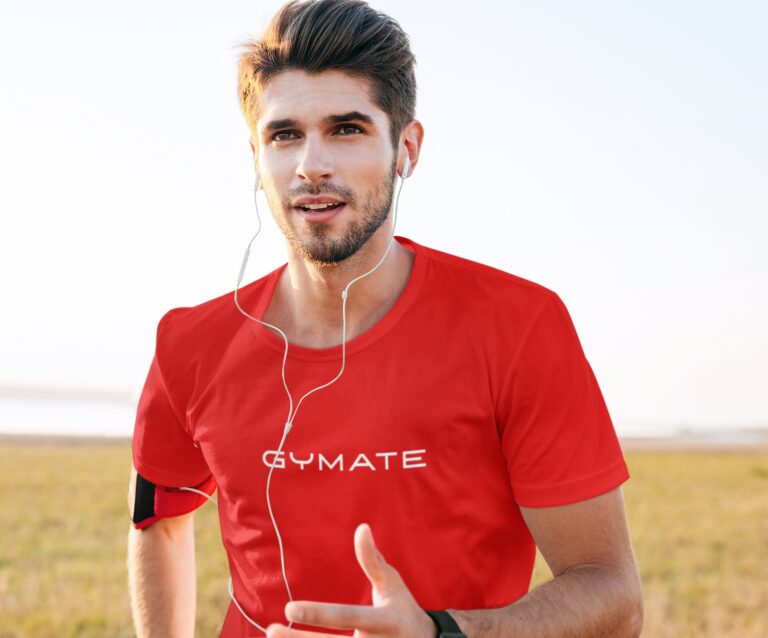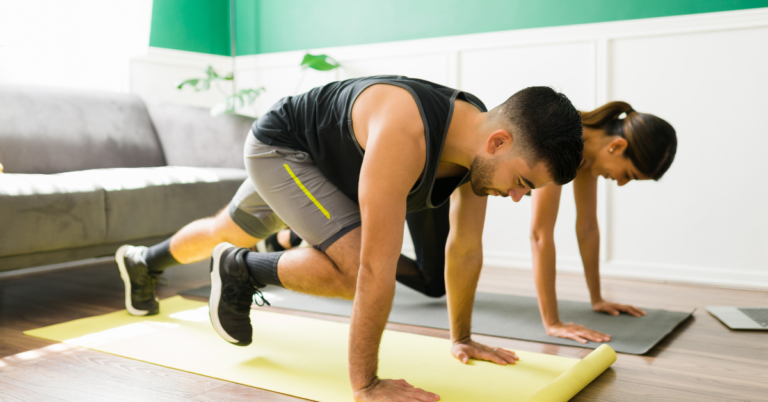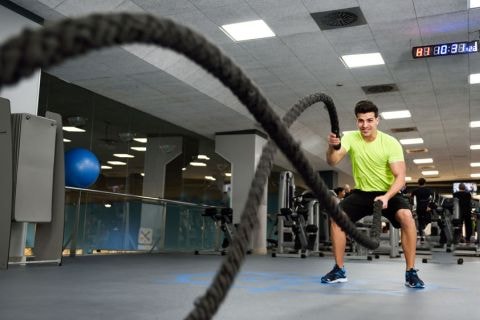Cross-training, or engaging in a variety of different exercises, is an excellent way for teenagers to stay active and healthy.
Improved Physical Fitness
Cross-training allows teens to engage in a variety of different exercises, which can improve their overall physical fitness. By combining different types of workouts, such as strength training, cardio, and flexibility exercises, teens can develop a well-rounded fitness routine that targets multiple muscle groups and improves their overall physical health.
Reduced Risk of Injury
When teens engage in the same type of exercise over and over again, they can develop overuse injuries. Cross-training helps reduce the risk of injury by allowing teens to work out different muscle groups and avoid the strain that comes from repetitive movements.
Increased Mental Toughness
Cross-training requires teens to push themselves out of their comfort zones and try new exercises. This can help them develop mental toughness, which is an important life skill that can be applied in many different areas of life.
Improved Sports Performance
For teens who participate in sports, cross-training can help improve their performance by developing different muscle groups and improving overall physical fitness. This can help them become more well-rounded athletes and reduce the risk of injury.
More Variety and Fun
Engaging in a variety of different exercises can help keep teens interested and motivated in their fitness routine. It can also make working out more enjoyable and fun, which can help them stick to their routine over the long term.
Benefits of Cross-Training for Teens
A. Improved Fitness
- Aerobic Capacity: Cross-training involves a variety of exercises that can help to improve aerobic capacity. By engaging in activities like running, cycling, or swimming, teens can increase their lung capacity and improve their overall endurance.
- Strength and Power: Cross-training also involves exercises that target different muscle groups and improve strength and power. This can include weightlifting, resistance training, or bodyweight exercises like push-ups and squats.
- Flexibility and Balance: Many cross-training exercises involve stretching and balance work, which can improve flexibility and balance. This can include activities like yoga or Pilates, which can help to prevent injuries and improve overall performance.
B. Reduced Risk of Injury
Cross-training involves a variety of exercises that can help to prevent injuries. By engaging in activities that target different muscle groups and work on flexibility and balance, teens can reduce their risk of injury from overuse or muscle imbalances. Additionally, cross-training can help to improve overall conditioning and reduce the risk of injury from falls or accidents.
C. Increased Motivation and Engagement
Cross-training can be a great way to keep teens engaged and motivated in their fitness routines. By switching up activities and trying new exercises, teens can avoid boredom and stay interested in their workouts. Additionally, cross-training can help to break through plateaus and push teens to new levels of fitness and performance.
D. Enhanced Performance in Specific Sports
Finally, cross-training can have a positive impact on performance in specific sports. By engaging in exercises that target different muscle groups and improve overall fitness, teens can improve their skills and abilities in their chosen sport. Additionally, cross-training can help to prevent injuries and improve recovery time, allowing teens to train harder and perform better.
Different Exercises for Cross-Training
A. Endurance Training
- Running Running is a popular endurance exercise that can help teens build endurance and cardiovascular fitness. Running is a simple exercise that can be done anywhere and at any time, making it an excellent addition to any cross-training routine.
- Swimming Swimming is another great endurance exercise that provides a full-body workout while being low-impact on the joints. Swimming can improve cardiovascular fitness, muscular endurance, and lung capacity, making it an excellent option for teens with asthma or other respiratory conditions.
- Cycling Cycling is a low-impact exercise that can improve cardiovascular fitness and build lower body strength. Cycling can be done outdoors or indoors on a stationary bike, making it a versatile exercise option.
B. Strength Training
- Weightlifting involves lifting weights to build strength and muscle mass. Teens who participate in weightlifting can see improvements in their overall strength and muscle tone, which can help improve their athletic performance and reduce the risk of injury.
- Bodyweight exercises Bodyweight exercises, such as push-ups, squats, and lunges, use the body’s weight to build strength and muscle tone. These exercises are simple, effective, and can be done anywhere, making them a great addition to any cross-training routine.
- Resistance band exercises Resistance band exercises use elastic bands to provide resistance, making them an effective strength training exercise. Resistance bands are affordable, portable, and versatile, making them an excellent option for teens who want to incorporate strength training into their cross-training routine.
C. Flexibility Training
- Yoga Yoga involves a series of poses and stretches that can improve flexibility, balance, and strength. Yoga can also help reduce stress and anxiety, making it an excellent option for teens who want to improve their mental well-being.
- Pilates Pilates is a low-impact exercise that focuses on building core strength, improving posture, and increasing flexibility. Pilates can help teens improve their athletic performance, reduce the risk of injury, and improve their overall physical health.
- Stretching Stretching is a simple exercise that can help improve flexibility and reduce the risk of injury. Stretching can be done before or after exercise, and incorporating it into a cross-training routine can help teens improve their overall physical health and athletic performance.
D. Agility and Balance Training
- Agility ladder drills Agility ladder drills involve a series of footwork exercises that can improve agility, balance, and coordination. These drills can be done indoors or outdoors and are an excellent addition to any cross-training routine for teens who want to improve their athletic performance.
- Balance board exercises Balance board exercises involve using a balance board to improve balance, stability, and core strength. These exercises can be challenging and can help teens improve their athletic performance, reduce the risk of injury, and improve their overall physical health.
- Jumping and landing drills Jumping and landing drills involve jumping and landing in different positions to improve balance, coordination, and overall athleticism. These drills can be done indoors or outdoors and are an excellent addition to any cross-training routine for teens who want to improve their athletic performance.
Benefits of Cross-Training
A. Improves Overall Fitness
Cross-training involves various exercises that target different muscle groups, which helps to improve your overall fitness. By incorporating activities such as running, cycling, swimming, weight lifting, and yoga into your routine, you can improve your strength, endurance, flexibility, and cardiovascular fitness.
B. Prevents Boredom
One of the primary benefits of cross-training is that it helps to prevent boredom from doing the same exercises repeatedly. When you mix up your routine, you’re less likely to get bored, and you’re more likely to stick with it.
C. Reduces Risk of Injury
Cross-training helps to reduce the risk of injury by working different muscle groups and reducing the strain on any one muscle or joint. This can help prevent overuse injuries that can occur from doing the same exercises repeatedly.
D. Improves Mental Health
Cross-training has also been shown to improve mental health by reducing stress and anxiety levels, improving mood, and boosting self-confidence.
Tips for Safe and Effective Cross-Training
A. Start Slowly and Progress Gradually
When starting cross-training, it’s important to start slowly and progress gradually. This means starting with lighter weights or lower intensity exercises and gradually increasing the weight or intensity over time. This helps to prevent injury and ensures that your body has time to adapt to the new exercises.
B. Use Proper Form and Technique
Using proper form and technique is essential for safe and effective cross-training. Improper form can lead to injury, so it’s important to learn the correct technique for each exercise. If you’re unsure, seek guidance from a qualified trainer.
C. Listen to Your Body
It’s essential to listen to your body and rest when you need to. If you’re feeling tired or sore, take a break or modify your routine to avoid injury. Pushing yourself too hard can lead to burnout or injury, so it’s important to find a balance between pushing yourself and taking care of your body.
D. Rest and Recover
Rest and recovery are essential components of cross-training. When you’re training, your muscles are breaking down, and recovery is when they repair and rebuild. Make sure to give your body enough time to rest and recover between workouts to prevent injury and maximize performance.
E. Seek Professional Guidance
If you’re new to cross-training or have any underlying medical conditions, seek guidance from a qualified trainer or medical professional. They can help you develop a safe and effective training program that’s tailored to your individual needs and goals.
Benefits of Cross-Training for Teens:
Cross-training provides numerous benefits for teens, including improved physical fitness, reduced risk of injury, enhanced mental health, and increased motivation and enjoyment. By engaging in a variety of different exercises, teens can improve their overall fitness and health.
Encouragement to Try Different Exercises:
We encourage teens to try different types of exercises to keep their workouts interesting and challenging. By trying different exercises, teens can work different muscle groups and avoid boredom and burnout.
Final Thoughts and Recommendations:
Cross-training can be a fun and effective way for teens to stay fit and healthy. However, it is important to consult with a healthcare professional before starting any exercise program. Start slow, set realistic goals, and track progress to stay motivated. Mix it up and have fun to keep your workouts interesting and challenging!
About The Author
Gymate is a not-for-profit UK initiative to inspire teenagers, young people and anyone new to exercise to start exercising at home. If you have enjoyed this Blog, check out our other Blogs offering health and fitness advice. Thinking you need to get fit? Gymate workout pages are a good place to start, with free videos and health advice. Looking for stylish active wear / athleisure wear? Our cross ownership company www.gymate-pro.com offers a wide range of Gymate branded active and everyday wear.
References:
- British Journal of Sports Medicine. (2016). Cross-training for sports performance enhancement and injury prevention. https://bjsm.bmj.com/content/50/18/1093.long
- Sport England. (2020). Cross-training for young athletes: A guide for parents and coaches. https://www.sportengland.org/how-we-can-help/our-knowledge/cross-training-young-athletes-guide-parents-and-coaches
- UK Coaching. (2019). The benefits of cross-training. https://www.ukcoaching.org/resources/topics/physical-conditioning/articles/the-benefits-of-cross-training
- National Health Service. (2018). Physical activity guidelines for young people. https://www.nhs.uk/live-well/exercise/physical-activity-guidelines-for-children-and-young-people/
- Youth Sport Trust. (2019). Why cross-training is important for young athletes. https://www.youthsporttrust.org/news/why-cross-training-important-young-athletes






